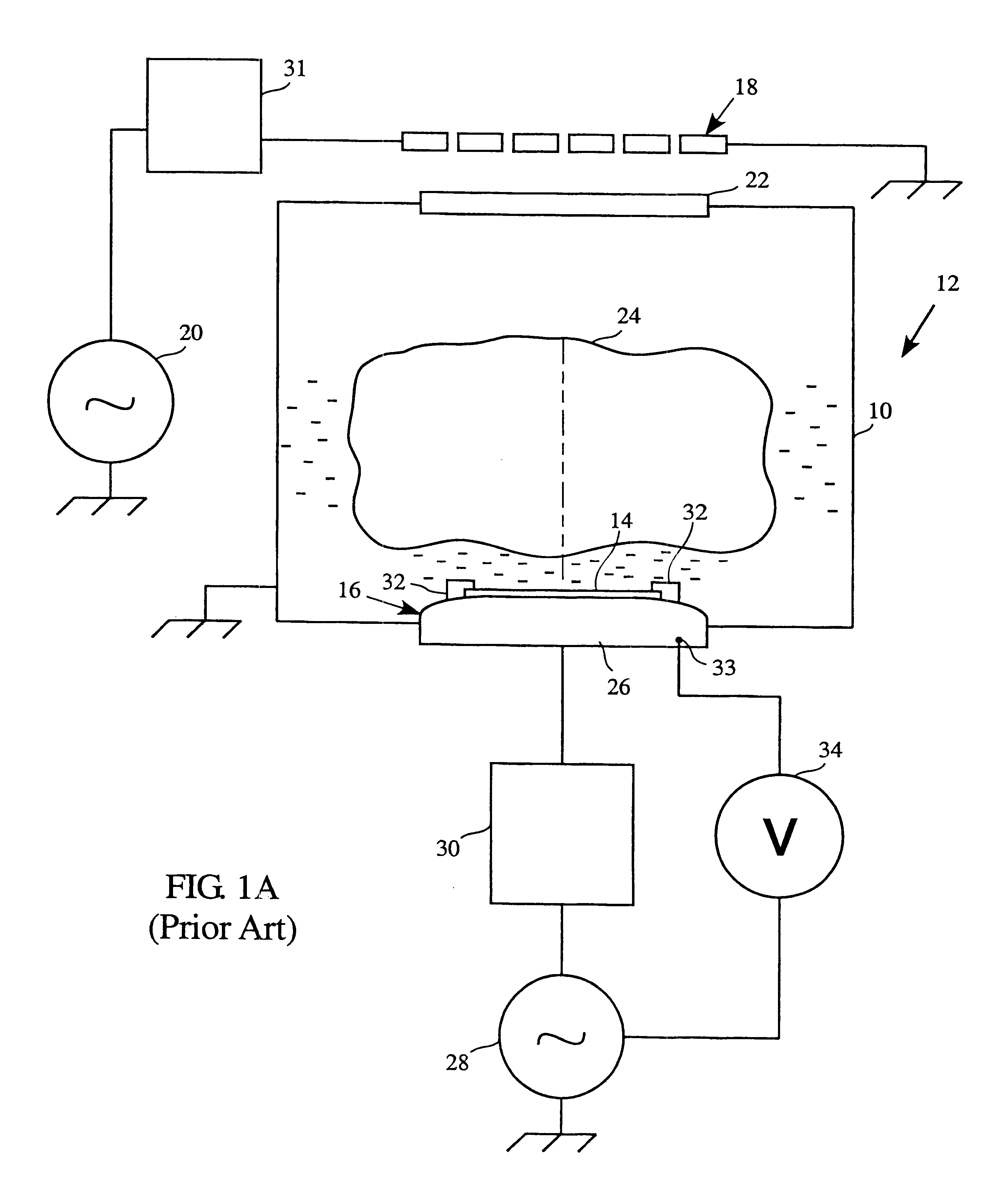Voltage control sensor and control interface for radio frequency power regulation in a plasma reactor
a voltage control sensor and radio frequency power regulation technology, applied in plasma welding apparatus, plasma technique, manufacturing tools, etc., can solve the problems of variable losses, unpredictable, and unpredictable losses, and the actual power delivered may unexpectedly change the process ra
- Summary
- Abstract
- Description
- Claims
- Application Information
AI Technical Summary
Problems solved by technology
Method used
Image
Examples
Embodiment Construction
FIGS. 1A, 1B and 1C have been discussed with reference to the background art.
With reference to FIG. 2A, the present invention is embodied in a plasma reactor system, generally referred to as 200. The plasma reactor 200 includes a plasma chamber 202 and a Transformer Coupled Plasma (TCP) coil 204 disposed outside and above the plasma chamber 202. The plasma chamber 202 further includes a gas inlet 203 and a gas outlet 205. The TCP coil 204 is coupled with a plasma generation power source 206 which provides a plasma generating Radio Frequency (RF) signal. A match network 207 is included between the plasma generation power source 206 and the TCP coil 204. A ceramic window 208 located adjacent the TCP coil 204 in the upper wall of the chamber 202 allows efficient transmission of the plasma generating RF signal into the plasma chamber 202. An electrostatic chuck 210, located at the bottom of the chamber 202, supports a workpiece 212.
With continued reference to FIG. 2A, the electrostatic ...
PUM
| Property | Measurement | Unit |
|---|---|---|
| impedance | aaaaa | aaaaa |
| impedance | aaaaa | aaaaa |
| variable power | aaaaa | aaaaa |
Abstract
Description
Claims
Application Information
 Login to View More
Login to View More - R&D
- Intellectual Property
- Life Sciences
- Materials
- Tech Scout
- Unparalleled Data Quality
- Higher Quality Content
- 60% Fewer Hallucinations
Browse by: Latest US Patents, China's latest patents, Technical Efficacy Thesaurus, Application Domain, Technology Topic, Popular Technical Reports.
© 2025 PatSnap. All rights reserved.Legal|Privacy policy|Modern Slavery Act Transparency Statement|Sitemap|About US| Contact US: help@patsnap.com



